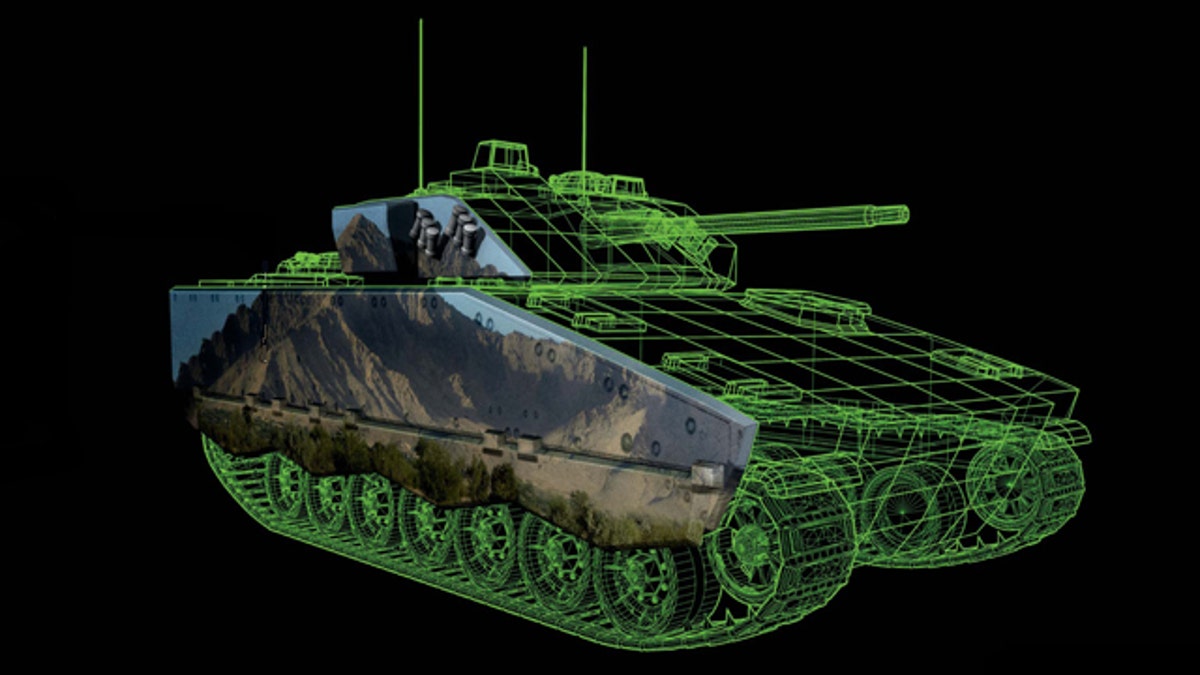
In BAE Systems "eCamouflage" concept, images are projected on the hull of a combat vehicle that change in concert with the environment -- making the vehicle invisible. (BAE Systems)
Invisible tanks -- and maybe invisible soldiers -- may soon be charging onto battlefields.
A British weapons manufacturer is making good on the promise of Wonder Woman's invisible jet, describing an "eCamouflage" system that uses electronic ink to disguise combat vehicles by projecting videos of the countryside onto them -- electronic squid ink of a sort.
Using highly sophisticated electronic sensors attached to a vehicle's hull, BAE Systems plans to project images of the surrounding environment back onto the outside of the vehicle -- enabling it to merge into the landscape and evade attack, explained London paper The Telegraph.
Unlike conventional forms of camouflage, the images on the hull would change in concert with the changing environment, always insuring that the vehicle remains disguised.
BAE Systems is working with an unnamed Swedish company that makes a technology similar to the e-ink screens in digital book readers like the Amazon Kindle and Sony Reader, explained Mike Sweeney, head of external communications for the company.
E-ink screens, as any e-book reader can attest, are both slow to refresh and black and white -- two clear obstacles to this technology. BAE has solved those problems, Sweeney told FoxNews.com.
"The guys in Sweden, together with some other companies we've been looking at, have the answer to that question," he said. BAE is starting with tanks, such as the CV90 (or Combat Vehicle 90, the Swedish equivalent of the Bradley tank) on which the first tests will be conducted. But the technology won't be limited to them, Sweeney said.
"We're also working on it for aircraft," he told FoxNews.com.
This isn't the first time the technology has been discussed. FoxNews.com wrote about invisible tanks in 2007, when they were merely a concept. And BAE isn't alone in its quest to make things vanish. Several companies have been working on similar technologies, all based on the same approach, as Sweeney was quick to note: They all use "a camera to capture the scene on the other side of the vehicle, then project that image on the other side of the vehicle so that it blends into the environment."
But BAE plans to make it happen, intending to test in Sweden at the end of the month a technology it calls "adaptive signature." And the next stage, Sweeney explained, will be transparent battle armor for soldiers.
The concept was developed as part of the Future Protected Vehicle program, which BAE's scientists believe will transform the way in which future conflicts will be fought.
A spokesman for the Defense Advanced Research Projects Agency (DARPA) -- the U.S. Department of Defense's research and development wing -- told FoxNews.com on Tuesday that a similar program that utilized "negative index materials" was scuttled in 2009 due to unviable research.
For more information, see the Telegraph.
